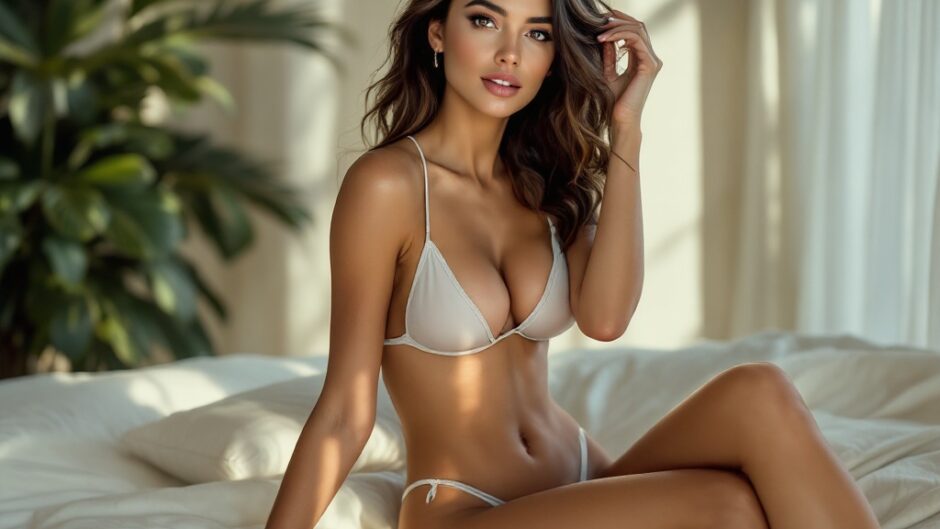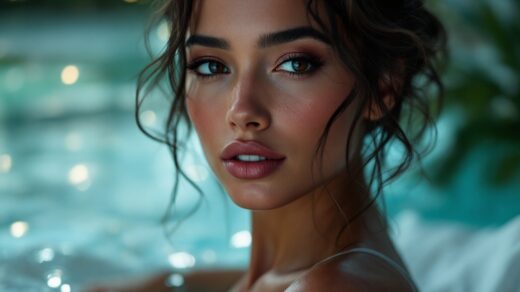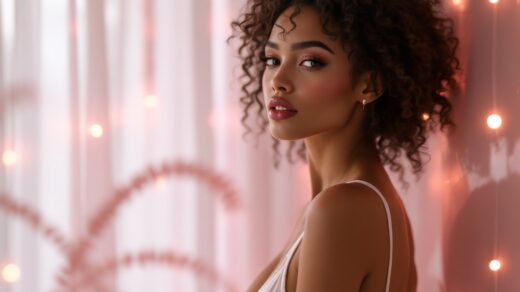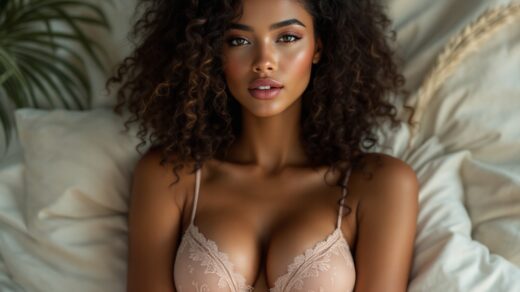In the vibrant world of digital art, the creation of AI-generated erotic images has experienced a remarkable rise, captivating both creators and their audiences. Yet, generating these images alone isn’t sufficient; the magic lies in the art of composition, which plays an indispensable role in attracting the viewer’s attention. Excelling in compositional skills can transform a basic image into an alluring piece of art, striking profound emotional chords with viewers. This article plunges into essential composition methods designed to elevate AI erotic images, assuring that every piece not only distinguishes itself but also stirs the intended response. By weaving together foundational principles and daring to explore various techniques, artists can convey a distinct narrative through their creations.
Grasping the importance of composition is essential for any artist immersed in the arena of erotic imagery. A finely composed picture does more than just delight the visual senses; it forms a bond between the artwork and the observer. Essential factors such as symmetry, contrast, and focus become pivotal, steering the viewer’s gaze and feelings. With AI technology readily accessible, mastering these tools becomes even more crucial in crafting engaging visuals. This voyage into composition unveils actionable techniques that can metamorphose AI-generated art into captivating experiences.
Understanding the Importance of Composition
Composition entails the strategic organization of visual components within an artwork. In the realm of AI erotic images, effective composition dramatically influences viewers’ perceptions and reactions. A well-composed image achieves balance, captures interest, communicates atmosphere, and stirs emotions, all of which connect with the audience. Modern technology empowers artists to experiment with composition in unprecedented ways. Elevating visual storytelling demands not just creativity but a solid grasp of compositional basics. Recognizing these principles can notably enhance the caliber of erotic imagery.
Fundamental Composition Techniques
The Rule of Thirds is one of the most pivotal composition strategies. By segmenting the image into a 3×3 matrix, artists can align focal points with the intersecting lines, crafting a balanced and fascinating composition. This tactic accentuates the sensual facets of the image, directing the viewer’s gaze to where it truly matters. The Rule of Thirds doesn’t just boost aesthetic appeal; it lays down a natural rhythm that feels satisfying. It aids in distributing visual heft adeptly, allowing elements to harmonize seamlessly. Artists are encouraged to play with this technique and observe its transformative effect on their erotic imagery.

Leading Lines
Deploying leading lines within your composition can profoundly steer the viewer’s perspective through the image. These lines, whether stemming from natural or manufactured elements, channel attention towards the focal subject. Envision pathways, curves, or the extended form of a model’s body creating a visual expedition. This technique not only amplifies intrigue but can also deepen the viewer’s emotional tie to the story within the image. By purposefully incorporating leading lines, artists can craft fascinating routes that invite exploration and awaken curiosity.
| Composition Technique | Description | Best Suited For |
|---|---|---|
| Rule of Thirds | An image is split into nine equivalent sections, augmenting equilibrium. | Establishing focal points and emotional resonance. |
| Leading Lines | Visual trajectories guiding the viewer’s eyes to vital elements. | Enhancing narratives and visual smoothness. |
| Color Theory | Understanding the interplay of colors and their emotional effects. | Setting ambiance and amplifying emotional intensity. |
Color Theory and Emotion
Colors hold the key to emotions and can greatly alter the impact of an erotic image. Mastering color theory enables artists to choose shades that reflect the intended ambiance—passionate red and orange hues may evoke desire and warmth, while cooler tones can impart serenity and peace. An astute mix of colors can captivate the audience while also enriching the narrative component of the image. Engage in trying out diverse color schemes until discovering one that aligns perfectly with your artistic vision. See how shifting shades can trigger varied responses to further enhance the observer’s experience.
The Role of Lighting
Lighting holds a pivotal position in establishing the mood and atmosphere of an image. Low-key lighting can conjure intimacy and enigma, whereas high-key lighting fosters transparency and discovery. Moreover, deliberately employing shadows can amplify the allure and dimension of erotic images. Comprehending how lighting scenarios influence composition empowers artists to craft particular feelings and perceptions. Rather than being an afterthought, lighting should be an integral part of the narrative. Delving into the contrast between natural and artificial light can yield breathtaking, evocative results in AI-fueled art.
Natural vs. Artificial Light
Natural illumination is cherished for imbuing images with warmth and authenticity, while artificial lighting permits creative control to sculpt dramatic effects. Each light type serves varied functions and elicits distinct emotions. Common practices include:

- Natural Light: Perfect for capturing spontaneous scenes and eliciting a gentle glow.
- Artificial Light: Ideal for setting dramatic compositions, heightened contrast, and precise shadow manipulation.
- Mixed Lighting: Marrying the two to create layered effects for one-of-a-kind visual adventures.
Knowing the intricacies of light can profoundly enrich AI-generated erotic images, bringing them alive in unexpected ways.
Textural Elements
Integrating varied textures enriches and adds allure to visual compositions. Whether it’s the velvety feel of skin, the coarse nature of fabrics, or the glimmer of metallic details, textures can boost the sensory journey for the viewer. A rich textural palette invites the audience to delve deeper into the imagery. Layering distinct elements and textures creates an immersive setting, allowing viewers to feel like an active part of the narrative. This approach not only fosters visual interest but conveys complexity in the backstory of the image. Understanding the interplay between textures can significantly affect the overall appeal and captivation of your work.
Layering Techniques
In the art of layering textures within erotic imagery, consider these techniques:
- Foreground Elements: Concentrate on close-up textures to attract focus and create intimacy.
- Background Layers: Incorporate depth and setting within the composition.
- Blending Techniques: Employ both soft and firm blending practices to smoothly combine textures.
Layering various elements offers a playground for creativity to thrive, pushing for experimentation with different texture sources to bolster the richness of your artwork.
Conclusion
Using effective compositional techniques in AI-generated erotic images drastically enhances the visual journey, rendering it more captivating and enticing for the audience. Understanding key concepts like the Rule of Thirds, leading lines, and the influential use of color and illumination permits creators to produce images that strike a balance between emotional depth and aesthetic appeal. By fusing artistic vision with intentional composition, artists can craft remarkable works that leave a lasting mark in the sprawling digital landscape. Embracing these techniques will not only refine the artist’s aptitude but also ensure the finished images evoke thought, emotion, and connection with their audience.
FAQ
- What is the Rule of Thirds? The Rule of Thirds is a compositional approach dividing an image into a 3×3 structure, identifying optimal focal points for balance and engagement.
- How does lighting affect erotic imagery? Lighting dictates atmosphere; it can inspire sensations of closeness or expansiveness based on its nature and intensity.
- Can color choice enhance the emotion in AI erotic images? Indeed, colors heavily impact emotions, making the correct palette crucial for the overall effect of the image.
- What are leading lines in composition? Leading lines are visual routes directing the viewer’s gaze to the image’s focal point, enhancing involvement and narrative continuity.
- Why is texture important in erotic images? Textures provide depth and sensory allure, enriching the viewer’s visual experience.



